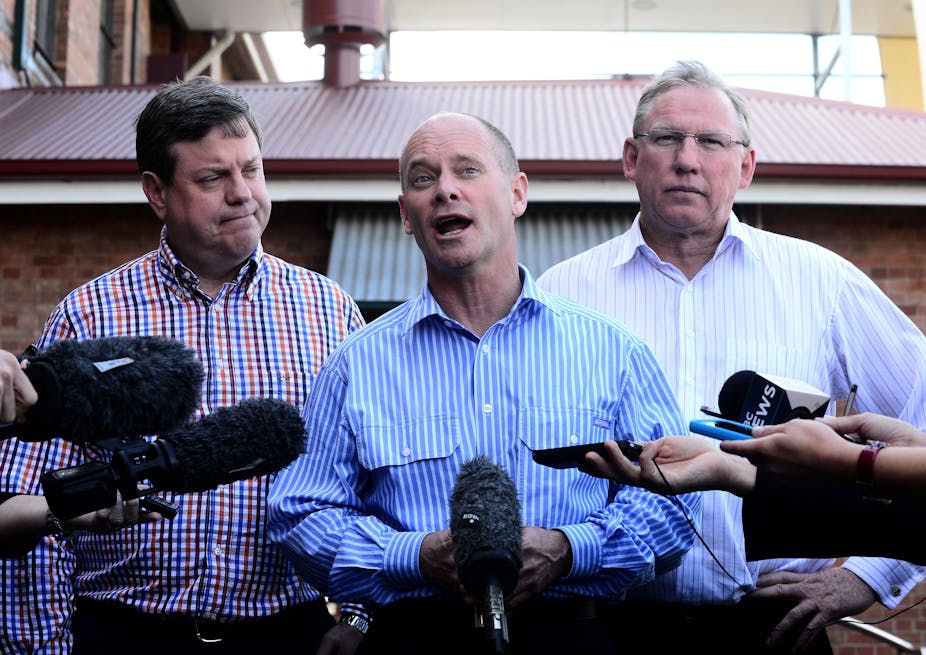Last March, Campbell Newman won his state election in a victory of unprecedented proportions securing just under 88% of seats in the single parliamentary chamber. In the five months since, the government has generated and weathered a variety of storms, and it is probably fair to say that the public is still sizing up its performance.
With the government’s first budget to be handed down tomorrow, there may be more negative reaction on the way from the public. It is expected that a fuller picture of the extent of the government’s belt-tightening will emerge.
Cost-cutting is certainly what the LNP government appears to be doing, driven by revelations of massive state debt brought starkly to public attention through a report handed down by the Commission of Audit. The commission was set up early in the government’s term and headed by former federal treasurer Peter Costello.
The government’s response was to set forth on a path of cutting back the size of the state public service, with the premier stating that Queensland had 20,000 more public servants than it could afford. The process of culling public service positions began promptly and thousands of jobs have already been cut.
On a more minor scale, there have been a number of decisions that have caused ripples of discontent, including the very early announcement of the withdrawal of funding for the Premier’s Literary Awards, Police Minister David Gibson’s resignation within weeks of being appointed, moving the Labor Party out of the designated opposition offices in Parliament House and the setting up of a weapons advisory panel populated, in the first instance, exclusively by supporters of firearms ownership.
One of the fascinating things about this government is that the premier himself is one of the newest members of the state parliament and at times that inexperience has shown.
It was nowhere more clearly on display than in Newman’s dealings with other state and federal leaders at Council of Australian Government meetings, with respect to issues such as the National Disability Insurance Scheme and comparing Queensland’s economy to that of Spain.
On the other hand, Newman has shown a refreshing preparedness to admit publicly to errors and correct them, such as in the case of one of his ministers appointing an LNP official as an auditor of a government agency, and in the case of the the weapons advisory panel.
Queensland is already looming as a major battleground for the next federal election, with indications being that the Labor Party could lose several of the Queensland seats it now holds.
As a result, both sides of politics have been on the offensive. The Labor federal government is warning that the actions of the Queensland government are indicators of what Tony Abbott might do if he became Prime Minister. The state government, meanwhile, has been taking opportunities to paint the federal government’s policies (for example, on the carbon tax and environmental regulations) as being harmful the Queensland economy.
Two recent opinion polls provided thought-provoking results.
The first was conducted early in August by ReachTEL in the premier’s seat of Ashgrove. It showed support for Newman having fallen 9% from the winning margin he achieved at the election in March, giving the Labor Party the lead in the two-party preferred vote. While this alone would not cause great concern for the premier – particularly given the context of the tough measures the government is currently enacting – what it does highlight is the electoral vulnerability of the seat Newman chose to contest. Ashgrove is not a “natural” LNP seat and when the government inevitably faces a swing against it in future elections it may be one that Newman and the LNP find difficult to defend.
The second poll of interest was conducted by Galaxy Research for the Courier Mail newspaper on 22-23 August. This state-wide poll showed the government’s firs -preference support to be well down on the previous poll conducted in May – 54% down to 48% now – although the LNP maintained a very comfortable lead in the two-party preferred vote. Most notable, however, was the large dip in the premier’s own approval rating – 64% down to 44% – and a corresponding increase in his disapproval rating (19% to 49%). This implies that the premier himself is bearing the brunt of public disapproval of his government’s cost-cutting measures.
The challenge now for Campbell Newman’s government may increasingly become when to time a change from austerity measures to more positive policy implementation in the lead-up to the next election.

